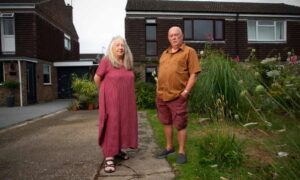
Jim Bunce thought he was doing the right thing for his purse and the planet: in 2022, as fuel costs soared, he and his wife decided to improve the energy efficiency of their house.
They discovered that the government had endorsed spray-foam insulation, a quick and unobtrusive technique by which liquid foam is spray-gunned into roof spaces and walls. Their loft was successfully treated at a cost of £2,800 and their gas bills duly fell.
Now, two years on, they have found that, by making their home more energy efficient, they have also made it unsaleable. “We are unable to borrow against it, or potentially to sell it, unless the foam is completely removed,” says Bunce.
The couple had hoped to take out an equity release mortgage to fund their retirement. “No provider will offer equity release on a property with spray-foam insulation due to fears that it damages roof timbers,” he says. “The removal will cost us £3,370 and, apart from the waste of money, there’s the environmental impact of 50 square metres of spray foam being sent to landfill.”
Thousands of other householders are in the same position. It’s estimated that up to 300,000 properties could be affected, some of which had government funding for the work.
A report published in March by the government’s Health and Safety Executive found that condensation could cause 25% of roof timber to decay within five years if spray foam is applied directly to roof tiles, or certain underlays. The general risks increase the further north the property is, because of colder climates.
At the root of the problem are cowboy traders who apply the foam without a full survey or appropriate expertise – but because of lenders’ caution, this is affecting other homeowners who had similar work.
Bunce’s insulation was open-cell spray foam, which is deemed low risk, and he was satisfied with the workmanship. But because surveyors are unable to inspect the roof timbers behind the layers, mortgage lenders tend to issue blanket refusals on properties where any foam is present.
Anita Ryan* faces a bill of more than £6,000 to remove her spray-foam insulation after discovering it rendered her home unsaleable.
“We had insulated our loft conversion 10 years ago and it was signed off by the council with no issues noted. But when we tried to put the house on the market, we were told the value is essentially zero until we have the foam stripped out,” she says.
“Spray foam is still legal, so there is no way to gain compensation, and the industry is not regulated – neither the installation nor the removal – so choices are open to abuse by companies supplying these services.”
Homeowners say they were misled by the government, which exempted the insulation from VAT to promote uptake, as well as issuing grants worth up to two thirds of the installation costs. They feel this suggested the insulation was being endorsed.
